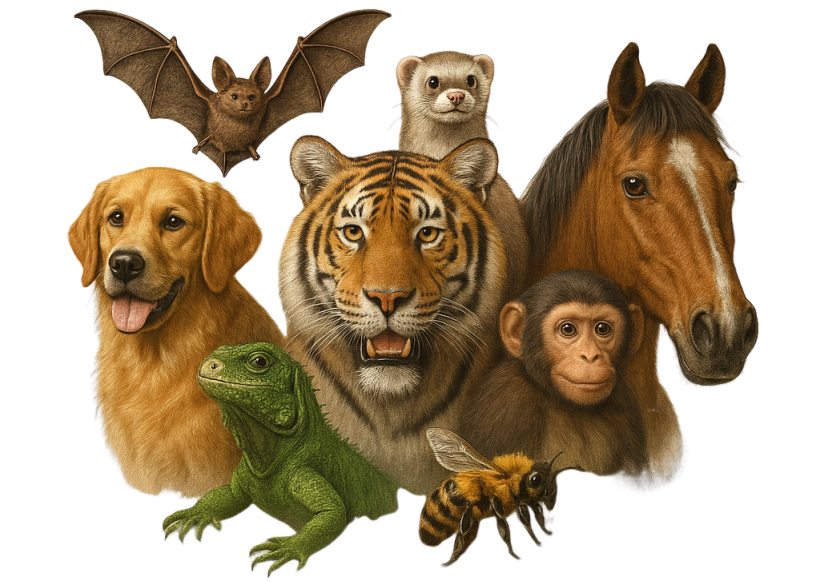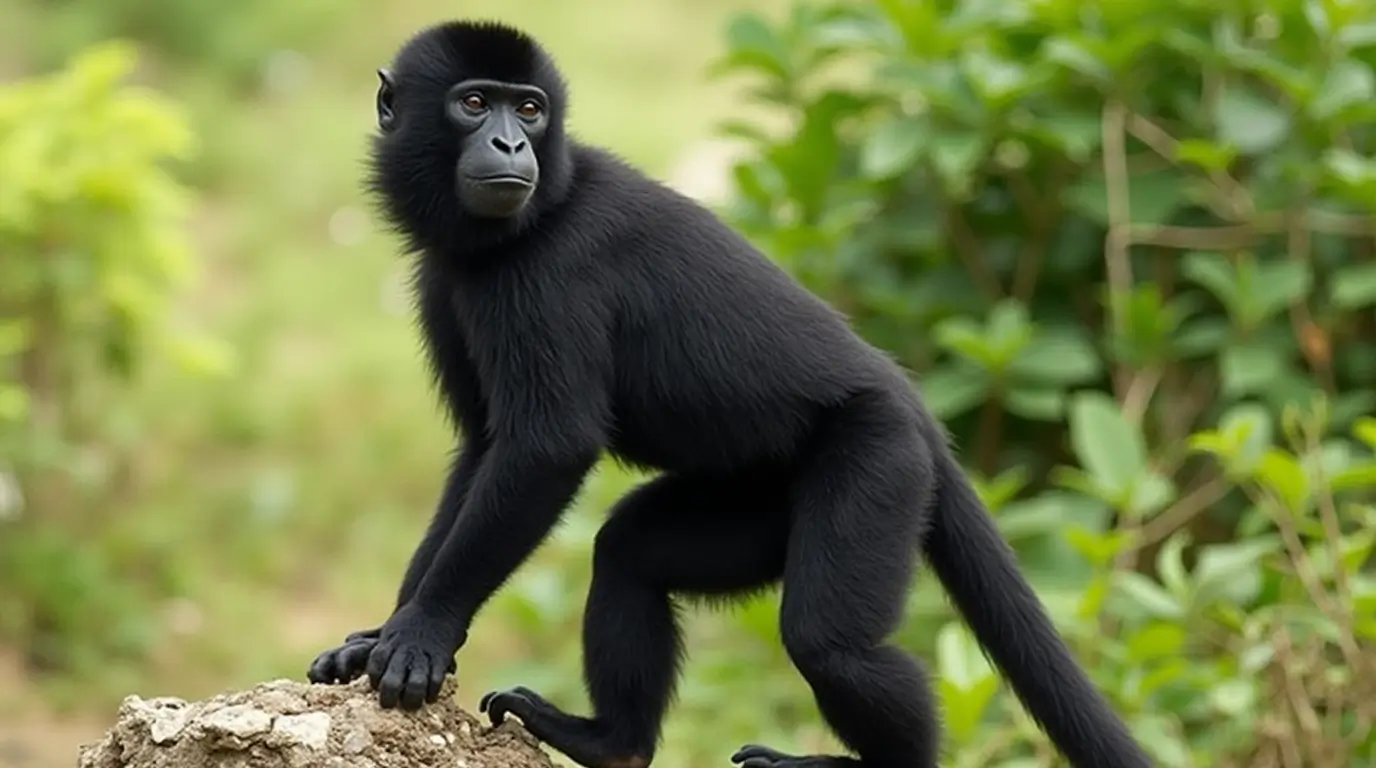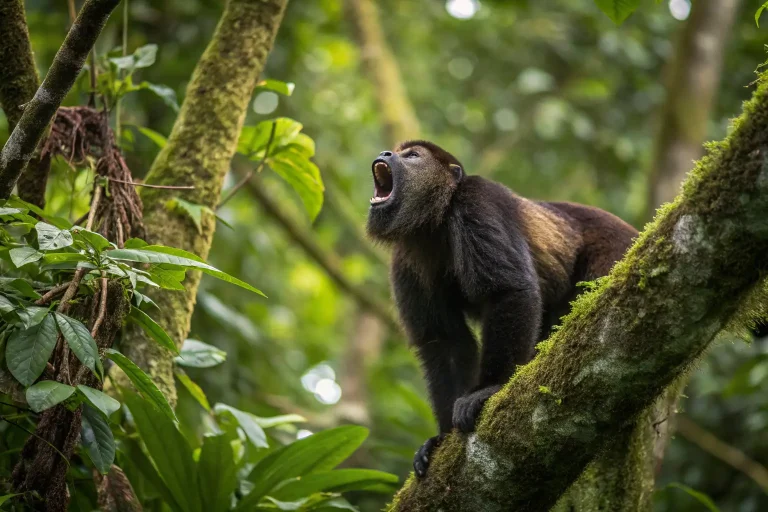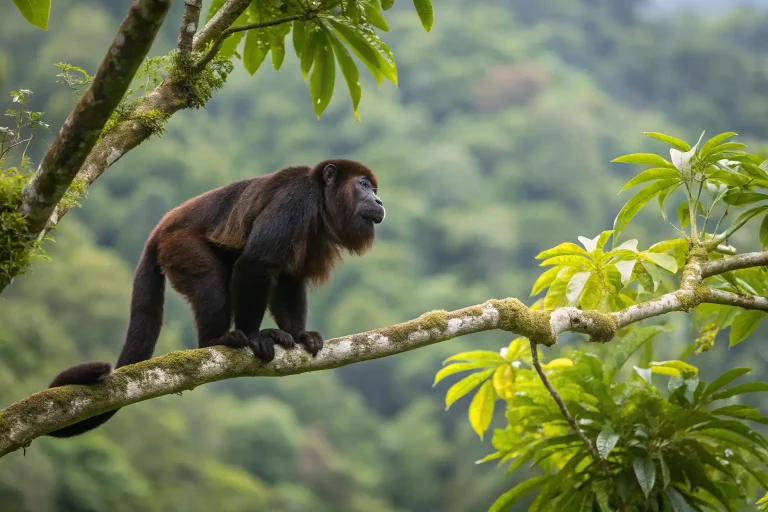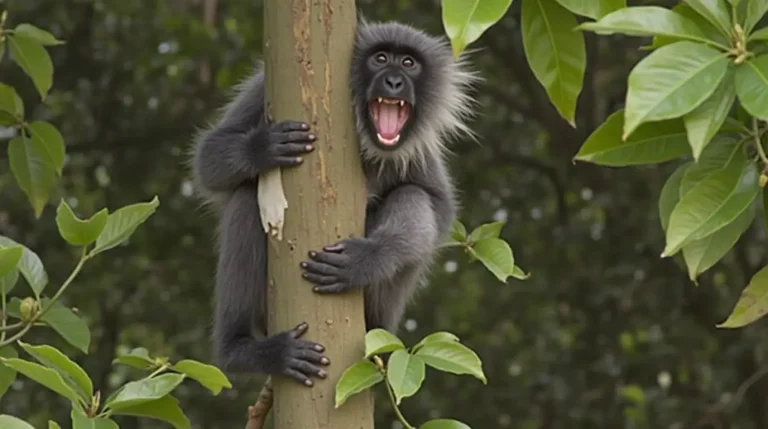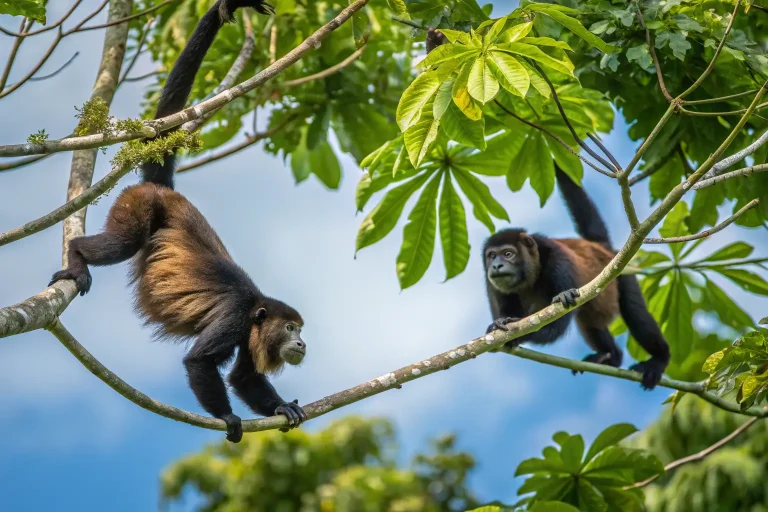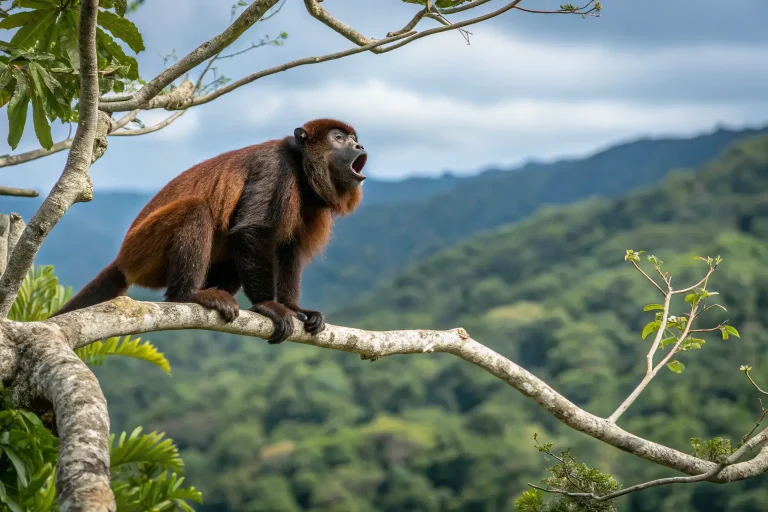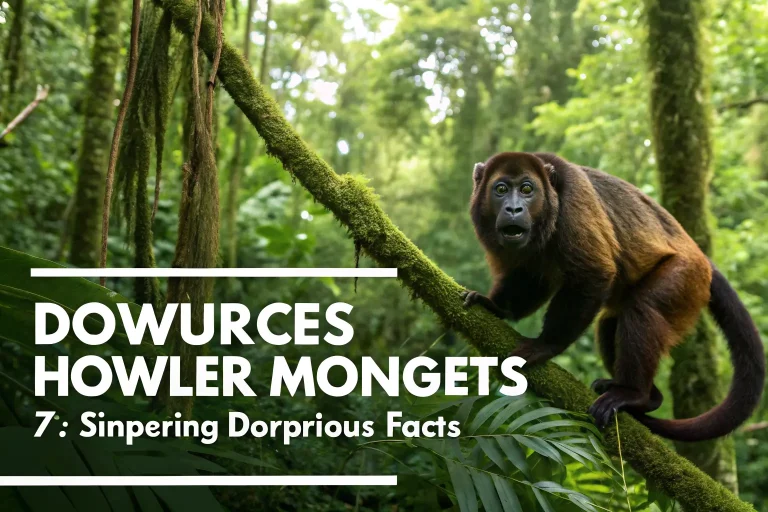Howler Monkey Pictures: 7 Stunning Shots to Enthrall Animal Lovers
Are you captivated by wildlife photography? The majestic howler monkey, with its expressive face and remarkable features, offers some of the most compelling subjects in animal photography. In this visual journey, we’ll explore seven breathtaking howler monkey pictures that showcase these fascinating primates in their natural habitat. From their distinctive facial expressions to their remarkable social behaviors, these howler monkey pictures capture moments that animal enthusiasts and photography lovers will treasure. Whether you’re researching these remarkable creatures or seeking inspiration for your next photography expedition, these images provide both educational value and artistic inspiration.
Introduction
The howler monkey, nature’s vocal virtuoso, captivates wildlife enthusiasts with its remarkable presence in the tropical forests of the Americas. Named for their distinctive howling calls that can travel up to three miles through dense jungle, these primates are among the most fascinating subjects for wildlife photography. Their expressive faces, rich behavioral patterns, and striking appearances make howler monkey pictures particularly compelling for both casual viewers and serious animal lovers alike.
Understanding these remarkable creatures is crucial for conservation efforts. As key seed dispersers that help maintain forest ecosystems, howler monkeys face increasing threats from habitat destruction and human encroachment. Through powerful photography that captures their essence, we can foster greater appreciation and awareness for these vital forest dwellers.
Did you know that howler monkeys possess the loudest call of any land animal on Earth? Their specialized vocal apparatus includes an enlarged hyoid bone that acts as a resonating chamber, allowing them to produce their iconic howls that can reach up to 140 decibels—louder than a rock concert!
Species Overview
Scientific Classification
Howler monkeys belong to the genus Alouatta in the family Atelidae. There are currently recognized species including the mantled howler (Alouatta palliata), the red howler (Alouatta seniculus), and the black howler (Alouatta caraya), among others. Each presents unique characteristics that make them fascinating subjects for nature photography.
Physical Characteristics
When examining howler monkey pictures, you’ll notice their distinctive features. They typically measure 22-36 inches (56-92 cm) in body length, with an additional tail length of 23-36 inches (58-91 cm). Males weigh between 15-22 pounds (7-10 kg), while females are slightly smaller at 10-15 pounds (4.5-7 kg).
Their most striking feature is their large throat and distinctive facial structure that supports their powerful vocalizations. Their fur varies dramatically between species—from the golden fur of the mantled howler to the deep black of male black howlers. This color variation makes howler monkey pictures particularly diverse and visually interesting.
Perhaps most notable is their prehensile tail, which functions as a fifth limb, allowing them to hang from branches while feeding and moving through the forest canopy. This adaptation features prominently in many captivating howler monkey pictures, showcasing their remarkable agility.
Subspecies and Variations
The various howler monkey species display regional adaptations and color variations. For instance, the black howler monkey exhibits dramatic sexual dimorphism—males are completely black while females have a golden-blonde coloration. The mantled howler shows regional variations across Central America, with subtle differences in coat patterns and facial features. These differences create opportunities for diverse and compelling howler monkey pictures that highlight the species’ rich variations.
Habitat and Distribution
Natural Habitat
Howler monkeys thrive in the lush canopies of tropical and subtropical forests across Latin America. They prefer mature forests with tall trees that provide both food resources and protection from predators. When viewing howler monkey pictures in their natural setting, you’ll typically see them amongst dense foliage, often at heights of 25-30 meters above the forest floor. They’re particularly fond of riverine forests, which provide abundant food sources and travel corridors.
The complex forest architecture gives these primates ample opportunities for movement and feeding, making for dramatic photographic opportunities as they navigate through branches and vines. Quality howler monkey pictures often capture them in these dynamic forest environments, showcasing their natural behaviors and adaptations.
Geographic Range
Howler monkeys boast an impressive distribution spanning from southern Mexico through Central America and into the northern regions of South America, including parts of Argentina and Brazil. Different species have adapted to various forest types:
- The mantled howler inhabits the forests of Central America from Mexico to Panama
- The red howler occupies the Amazon Basin and surrounding areas
- The black howler can be found in the Atlantic forests of Brazil, eastern Bolivia, Paraguay, and northern Argentina
This wide distribution means that howler monkey pictures can showcase diverse backdrops, from the misty cloud forests of Costa Rica to the sprawling Amazon rainforest.
Adaptations to Environment
Howler monkeys have evolved remarkable adaptations that appear frequently in striking howler monkey pictures. Their powerful prehensile tails serve as a fifth limb, providing stability while moving through the canopy and even allowing them to hang while feeding. Their digestive systems have specialized to process mature leaves, which few other primates can effectively digest, enabling them to thrive in habitats where fruit may be seasonally scarce.
Their infamous loud calls serve multiple ecological purposes—they help maintain territorial boundaries and coordinate group movements while minimizing physical confrontations. This vocal adaptation is often the inspiration for dramatic howler monkey pictures that capture them mid-howl, showcasing their expanded throat and characteristic posture during these impressive displays.
Diet and Feeding Habits
What They Eat
Howler monkeys are primarily folivores, with leaves constituting up to 70% of their diet—a relatively rare dietary specialization among primates. When examining howler monkey pictures showing feeding behaviors, you’ll often see them carefully selecting young leaves, which contain fewer toxins and higher protein content than mature foliage.
Their diet also includes:
- Fruits (especially when seasonally abundant)
- Flowers
- Nuts and seeds
- Occasional tree bark and stems
This diverse diet provides essential nutrients while allowing them to adapt to seasonal changes in food availability. Photographers seeking compelling howler monkey pictures often capture feeding moments, as these show the animals’ dexterity and focused expressions.
Foraging Behavior
Howler monkey feeding patterns make for fascinating photographic subjects. They typically spend 4-5 hours each day actively feeding, often in the early morning and late afternoon. During midday heat, they rest—creating perfect opportunities for more relaxed, contemplative howler monkey pictures.
Their methodical movements through the canopy are purposeful, with groups often following established routes to known feeding trees. When photographing howlers, wildlife photographers note how they carefully examine leaves before consumption, selecting the most nutritious options and avoiding those with high toxin levels—a behavior that makes for compelling close-up shots of their expressive faces.
Nutritional Requirements
The specialized digestive system of howler monkeys includes an enlarged cecum and colon that house symbiotic bacteria capable of breaking down cellulose from leaves—a remarkable adaptation captured in anatomical studies rather than typical howler monkey pictures. This adaptation allows them to extract nutrients from tough plant materials that other primates cannot process effectively.
Their leaf-heavy diet is relatively low in calories, explaining their generally slow movements and long rest periods—characteristics that actually make them somewhat easier subjects for wildlife photographers seeking detailed howler monkey pictures. This energy conservation strategy is essential for their survival on a diet that requires significant processing for relatively modest caloric returns.
Behavior and Social Structure
Social Organization
Howler monkeys live in cohesive social groups typically comprising 10-20 individuals, though group size varies by species. These groups usually contain multiple adult males, several females, and their offspring. The social dynamics within these groups make for fascinating howler monkey pictures that capture interactions between individuals.
The group maintains a hierarchical structure, with dominant males gaining preferential access to food resources and mating opportunities. Photographers often seek to capture these hierarchical interactions in howler monkey pictures, as they reveal complex social dynamics through subtle postures and expressions.
Unlike many primate species, howler monkeys don’t engage in extensive grooming behaviors, instead maintaining social bonds through proximity and coordinated group activities like calling and traveling—moments that result in some of the most dynamic and compelling howler monkey pictures.
Communication Methods
The hallmark of howler monkey communication is their extraordinary vocalization—the howl. Males possess a specialized hyoid bone that forms a resonating chamber in their throats, creating their iconic, powerful calls. These howls serve multiple purposes:
- Territorial announcements to neighboring groups
- Coordination of group movements
- Response to potential threats
- Morning “wake-up” calls that synchronize group activities
Capturing the moment of howling results in some of the most dramatic howler monkey pictures, with their throats visibly expanded and mouths wide open in mid-call. Beyond vocalizations, they communicate through body postures, facial expressions, and tail positions—all subtle cues that skilled wildlife photographers strive to document in expressive howler monkey pictures.
Reproduction and Family Life
Howler monkey reproduction follows seasonal patterns in many regions, with births often coinciding with periods of food abundance. Females typically give birth to a single infant after a gestation period of about 6 months. These mother-infant pairs create some of the most emotionally resonant howler monkey pictures, capturing the tender care and protective behaviors of mothers.
Young howlers cling to their mothers’ bellies initially, gradually transitioning to riding on their backs as they grow. These early months provide exceptional photographic opportunities for intimate howler monkey pictures that showcase parental care. Unlike many primate species, male howlers often remain uninvolved in direct infant care, though they provide protection to the entire group.
Female howlers reach sexual maturity around 3-4 years of age, while males mature slightly later at 4-5 years. Young males typically leave their birth groups to join others or form new groups—moments of transition that wildlife photographers rarely capture but which represent important aspects of howler monkey social dynamics.
Conservation Status

Current Endangerment Status
The conservation status of howler monkeys varies significantly by species according to the IUCN Red List. While some species maintain relatively stable populations, others face serious threats:
- The Guatemalan black howler (Alouatta pigra) and the Mexican howler (Alouatta palliata mexicana) are listed as Endangered
- The brown howler (Alouatta guariba) is classified as Vulnerable
- The mantled howler (Alouatta palliata) is Near Threatened
- The black howler (Alouatta caraya) is currently listed as Least Concern
These classifications highlight the uneven conservation landscape for these primates, a reality that powerful howler monkey pictures can help illustrate by documenting both thriving populations and those under pressure.
Threats to Survival
The primary threats facing howler monkeys include:
Habitat destruction and fragmentation: Deforestation for agriculture, logging, and urban development divides populations and reduces available feeding territory. Compelling howler monkey pictures often contrast these animals in intact forest versus fragmented habitats.
Hunting: Though less targeted than some primates, howlers are sometimes hunted for food or captured for the illegal pet trade.
Disease: Yellow fever outbreaks have devastated some howler populations, particularly in Brazil and Argentina.
Climate change: Shifting climate patterns affect food availability and habitat suitability, creating new challenges for these habitat specialists.
Evocative howler monkey pictures that document these threats serve as powerful conservation tools, raising awareness about the challenges these animals face.
Conservation Initiatives
Several conservation programs across Latin America focus on howler monkey protection:
- Habitat preservation efforts in countries like Costa Rica and Belize create protected corridors that maintain connectivity between forest fragments
- Reforestation projects in Mexico and Brazil aim to restore suitable habitat
- Wildlife rehabilitation centers care for injured and orphaned individuals
- Community-based ecotourism initiatives that feature howler monkey viewing create economic incentives for local protection
Conservation photographers producing compelling howler monkey pictures play a vital role in these efforts by raising awareness and generating public support. Their images document both conservation successes and ongoing challenges, creating visual narratives that can drive conservation action.
Interesting Facts
When you examine fascinating howler monkey pictures, you’re glimpsing animals with remarkable attributes that set them apart in the primate world:
Sound champions: Their howls can reach 140 decibels and travel three miles through dense forest—the loudest call of any land animal and approximately as loud as a jet engine at close range.
Extreme specialists: They’re among the few animals that can digest mature leaves, thanks to specialized gut bacteria that break down cellulose and detoxify plant compounds.
Color-changing species: Male black howlers are born with golden fur like females but transform to completely black as they mature—a dramatic change captured in howler monkey pictures documenting different life stages.
Slow movers: They move less than most primates, traveling only about 400 meters per day on average—an energy conservation strategy linked to their leaf-heavy diet.
Ancient ancestry: Fossil evidence suggests howler monkeys have remained relatively unchanged for over 10 million years, making them living representatives of ancient primate lineages.
Weather predictors: Local traditions in several Latin American countries associate intense howler calls with incoming rain—a folk belief with some scientific backing, as changing atmospheric pressure before storms may trigger increased vocalization.
Remarkable endurance: Howlers can survive in relatively small forest fragments where other primates disappear, showing remarkable adaptability to moderately disturbed landscapes.
These fascinating aspects of howler monkey biology and behavior often inspire photographers to seek particular types of howler monkey pictures that showcase these unique characteristics.
Tips for Photographing Howler Monkeys
For those inspired by dramatic howler monkey pictures and hoping to capture their own, consider these specialized photography tips:
Timing is everything: Howlers are most active in early morning and late afternoon. Position yourself near known feeding trees before sunrise for the best chance of capturing their morning calling behaviors.
Pack appropriate gear: A telephoto lens (minimum 300mm, but preferably 400-600mm) is essential for capturing detailed howler monkey pictures without disturbing the animals. Image stabilization helps when shooting in forest understory lighting.
Master forest lighting: The dappled, high-contrast lighting of forests presents challenges. Consider using fill flash with a diffuser in deep shade, or schedule photography for overcast days when contrast is reduced.
Practice patience: Howlers move slowly and methodically compared to other primates. Plan to spend extended periods observing a single group for the best photographic opportunities.
Learn to track vocalizations: The iconic howls provide excellent clues to location. Learn to triangulate direction from their calls to position yourself advantageously.
Anticipate behaviors: Understanding typical movement patterns helps you predict photo opportunities. For example, howlers often feed actively for 30-45 minutes, then rest—giving you time to reposition for the next activity period.
Respect distance: Maintain at least 10-15 meters from howler groups to avoid disturbing them. Remember that healthy howler monkey pictures come from undisturbed, naturally behaving subjects.
These specialized techniques have produced many of the stunning howler monkey pictures that inspire wildlife enthusiasts and conservation efforts worldwide.
Role in the Ecosystem
Ecological Importance
Howler monkeys serve as keystone species in neotropical forests, with ecological roles that extend far beyond their immediate presence. When examining howler monkey pictures in their habitat context, you’re seeing critical ecosystem engineers at work:
Seed dispersal: Howlers consume fruits and disperse the seeds through their droppings, helping to regenerate forest vegetation. A single group can disperse thousands of seeds annually across their home range.
Selective herbivory: Their leaf consumption patterns influence forest composition by affecting the competitive relationships between plant species.
Nutrient cycling: Their feeding habits and waste contribution accelerate nutrient cycling in forest ecosystems, particularly in the canopy where they spend most of their time.
Food web participation: Howlers serve as prey for large raptors, felids, and snakes, supporting predator populations in healthy ecosystems.
These essential ecological functions appear subtly in howler monkey pictures that show them feeding, moving through forests, and interacting with their environment.
Impact of Population Decline
When howler monkey populations decline, forests experience measurable changes that highlight their ecological importance:
- Reduced seed dispersal alters forest regeneration patterns and can decrease plant diversity
- Changes in herbivory patterns affect competitive relationships between plant species
- Predator populations may experience resource shifts or localized declines
- Overall ecosystem resilience decreases as these key functional roles are diminished
Conservation-focused howler monkey pictures that document their behaviors in healthy versus disturbed ecosystems help scientists and the public understand these complex ecological relationships.
Conclusion
The captivating howler monkey pictures we’ve explored showcase these remarkable primates in all their diversity—from their expressive faces to their complex social behaviors and extraordinary adaptations. As we’ve discovered, howler monkeys represent far more than just photogenic subjects; they’re ecological keystones that maintain forest health through seed dispersal and selective herbivory.
These compelling images serve as windows into the neotropical forests where howlers thrive, highlighting both their remarkable resilience and their vulnerability to ongoing habitat loss. The stark contrast between howler monkey pictures taken in pristine forests versus fragmented landscapes tells a conservation story that transcends words.
For wildlife enthusiasts, photographers, and conservationists alike, these visual records provide invaluable documentation of a species that connects us to ancient primate lineages while facing very modern threats. Next time you encounter striking howler monkey pictures, remember they represent not just beautiful animals, but essential threads in the complex tapestry of tropical forest ecosystems—ecosystems that benefit us all through climate regulation, biodiversity maintenance, and countless ecosystem services.
What will you do to help ensure future generations can experience these remarkable creatures, not just through howler monkey pictures, but thriving in their natural habitats? Consider supporting conservation organizations working in Latin America, choosing sustainable travel options that benefit local communities and their forests, or simply sharing the wonder of these remarkable primates with others who may be inspired to act.
Frequently Asked Questions
How loud are howler monkeys’ calls and how far can they travel?
Howler monkeys produce the loudest calls of any land mammal, reaching up to 140 decibels—comparable to a jet engine at close range. These remarkable vocalizations can travel up to three miles through dense forest, allowing groups to communicate across vast distances without direct visual contact. This vocalization prowess makes capturing howler monkey pictures during calling sessions particularly dramatic.
Why do howler monkeys have such varied coloration between species?
The color variations visible in different howler monkey pictures reflect evolutionary adaptations to different forest types and competitive pressures. Dark coloration in some species may provide better camouflage in dense forest, while reddish coloration might offer advantages in more open canopies with different light conditions. The dramatic sexual dichromatism in black howlers (black males, blonde females) may relate to sexual selection pressures unique to that species.
Can howler monkeys be kept as pets?
No, howler monkeys make extremely poor pets and should never be kept in captivity outside of accredited zoological facilities. Their specialized dietary needs, social requirements, and powerful vocalizations make them completely unsuitable for domestic settings. Additionally, the exotic pet trade threatens wild populations and often involves inhumane capture and transport methods. The best way to enjoy these animals is through ethical howler monkey pictures or responsible ecotourism that supports conservation.
How can I distinguish different howler monkey species in photographs?
When examining howler monkey pictures, look for these distinctive features: mantled howlers have a fringe of longer hair around their sides; red howlers display rich reddish-brown fur; black howlers show dramatic sexual dimorphism with all-black males and blonde females; brown howlers have more uniform brownish coloration. Geographic location also helps—howler monkey pictures from Mexico will show different species than those from Brazil or Argentina.
What’s the best place to photograph howler monkeys in the wild?
For photographers seeking impressive howler monkey pictures, several locations offer excellent opportunities: Costa Rica’s Manuel Antonio National Park and Monteverde Cloud Forest; Belize’s Community Baboon Sanctuary (despite the name, it protects black howlers); Mexico’s Palenque National Park; and Brazil’s Pantanal region. The best locations feature habituated groups, good visibility through the canopy, and established viewing platforms or trails that facilitate photography without disturbing the animals.
